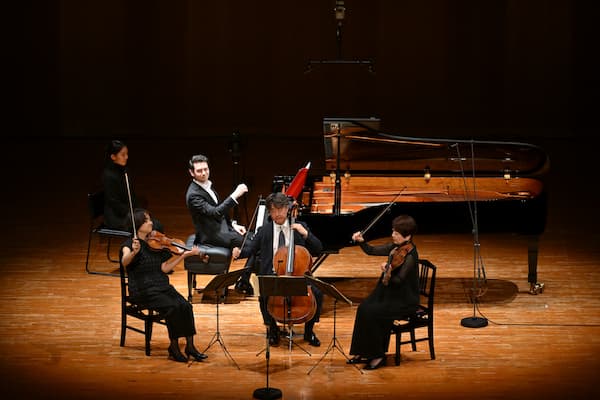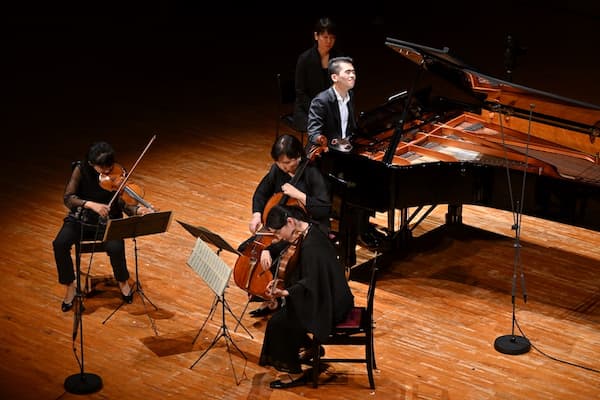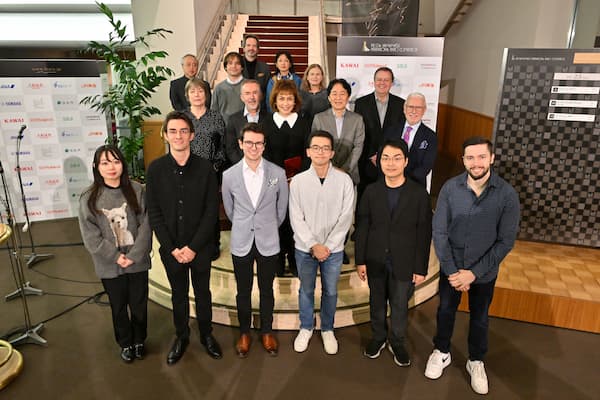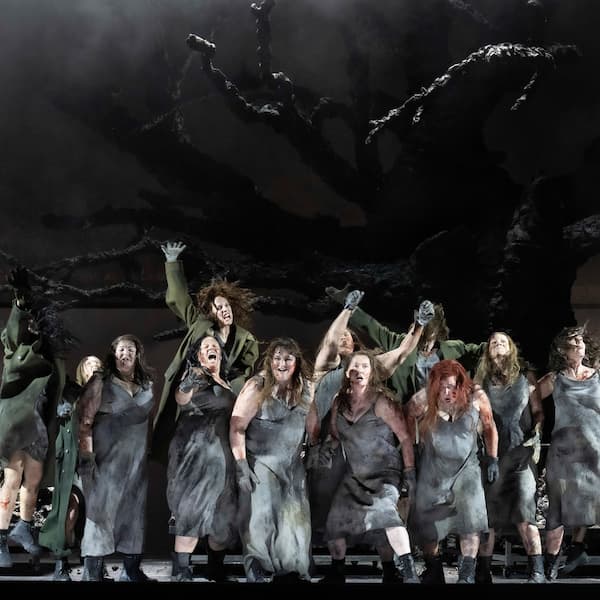I had no idea that chamber music could still draw such a huge crowd. Well, when it is part of the biggest and most prestigious piano competition in Asia, the 12th Hamamatsu International Piano Competitions, I probably shouldn’t be surprised. Tickets had been sold out 3 months in advance, and a long queue of ticket holders lined up outside the ACT CITY Concert Hall in nervous anticipation of grabbing their favourite seat. The house was full, and the stage was set.

No.1 Jonas AUMILLER © Hamamatsu International Piano Competition
Not all piano competitions feature a chamber round, but it is an integral part of the 12th Hamamatsu International Piano Competition. For Chairperson Noriko Ogawa, “it is vital to have a chamber music round, as a pianist’s career doesn’t mean just recitals and big concert dates. Musically speaking, chamber music reveals so much about every pianist.”
At the 12th Hamamatsu International Piano Competition, chamber music is the opening gambit for the “Third Stage” or semi-finals, followed by a solo recital with a free choice of pieces. The choice of chamber music, however, is not free, as contestants are required to play either the Mozart Piano Quartet No. 1 in G minor, K. 478, or the Mozart Piano Quartet No. 2 in E-flat Major, K. 493. The question was, how would competitors deal with this deliciously challenging requirement?
Mozart Piano Quartets

No. 10 JJ Jun Li BUI ©Hamamatsu International Piano Competition
Mozart was at the height of his pianistic and compositional powers when the publisher Franz Anton Hoffmeister ordered three piano quartets in 1785. This combination of the string trio with a fortepiano was essentially as new as the instrument itself. In essence, Mozart delivered supremely crafted chamber compositions that simultaneously function as magnificent showcases for the piano. Given their three-movement designs, we could rightfully call them chamber concertos.
Hoffmeister had intended the compositions for the Viennese amateur market, but Mozart clearly had not. A review of the G-minor in a Weimar musical journal concluded, “this work as performed by amateurs could not please. Everybody yawned with boredom over the incomprehensible Tintamarre of 4 instruments, which did not keep together for four bars on end, and whose senseless consentus never allowed any unity of feeling…”

No. 44 KOBAYASHI Kaito © Hamamatsu International Piano Competition
One thing for sure, there wasn’t a single amateur among the 12 competitors participating in the Third Round. In fact, most are seasoned veterans of the competition circuit with flourishing CD sales in the foyer. However, it was still a matter of engaging with Mozart’s ingenious theatricality and versatility.
Robert Bily: Third Stage, 12th Hamamatsu International Piano Competition
The Performances
The composer evokes different ensemble combinations throughout, ranging from a unified quartet to a duo concertante set-up for piano and violin, and even the violin sonata. Once you add dramatic flareups straight from the operatic stage, a strong emphasis on single-note melodic lines, and even miniature solo cadenzas, it becomes clear that the pianist has to wear a multitude of different hats.
All 12 competitors in the Third Round are wonderfully skilled pianists, and thus, it comes as no surprise that there was not a single bad performance to be found. All of them played at an astonishingly high professional and technical level, even though it was clear that not everybody was entirely comfortable with the chamber music setup. Some remained undecided about the role of the piano in the music, others stayed in the background as much as possible, and one competitor apparently didn’t own a score and played from xerox copies.

No.68 Korkmaz Can SAĞLAM © Hamamatsu International Piano Competition
None withstanding, we also heard a number of wonderful performances, with pianists teasing exquisite colours from the keyboard. Melodies were allowed to breathe, the fast runs were not rushed, and mature phrasing and dynamic contracts approached the true level of Mozart’s genius. Competitions are serious affairs, but some competitors still had fun while making music.
Finalists
Every single competitor used the solo recital portion with a free choice of pieces to their fullest advantage. The repertoire ranged across the entire spectrum of piano music, and it was clearly selected to highlight the pianistic and musical strengths of individual competitors.

Announcement of the result ©Hamamatsu International Piano Competition
In the end, the jurors had to make a decision, and given the high quality of the performances, it could not have been an easy one. When all was said and done, the list of Finalists included Robert Bily from the Czech Republic, Kobayashi Kaito from Japan, Jonas Aumiller from Germany, JJ Jun Li Bui from Canada, Korkmaz Can Sağlam from Turkey, and Suzuki Manami from Japan.
The chamber music requirement surely played a part in each juror’s decision making process. Just how much weight it actually carried was a topic of discussion amongst audience members, and it is one of the questions that I will be asking Dang Thai Son and Noriko Ogawa tomorrow; please stay tuned.
For more of the best in classical music, sign up for our E-Newsletter




